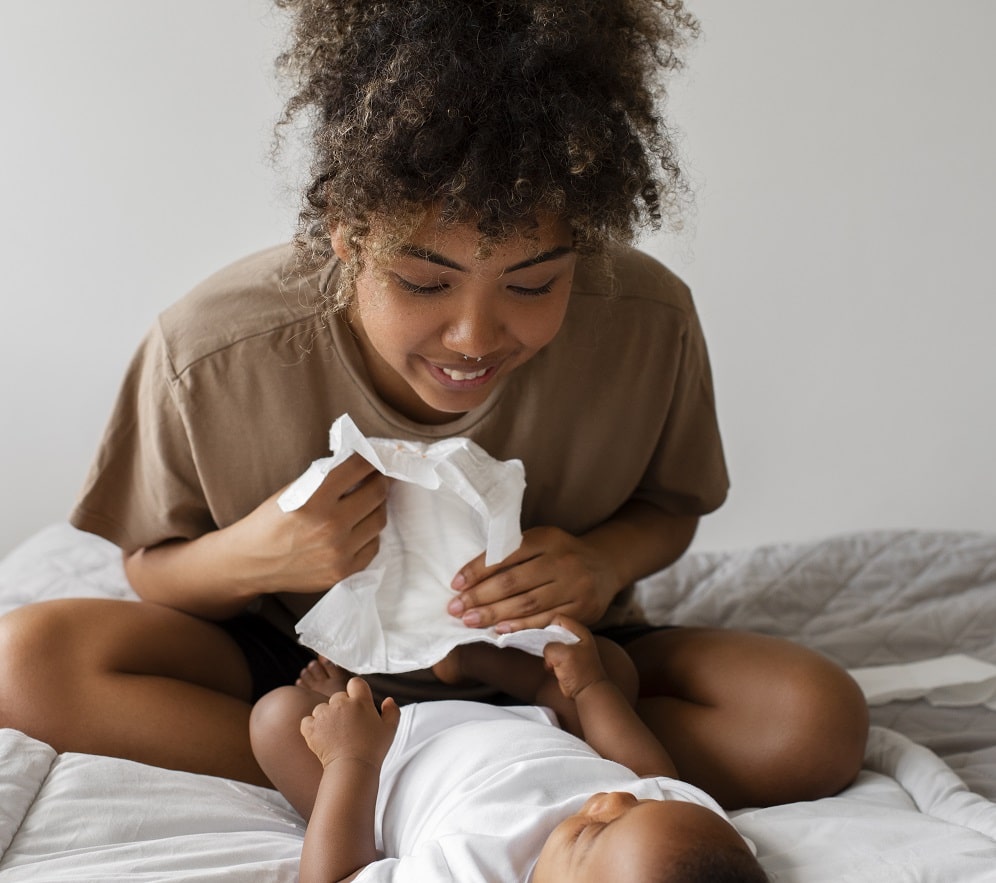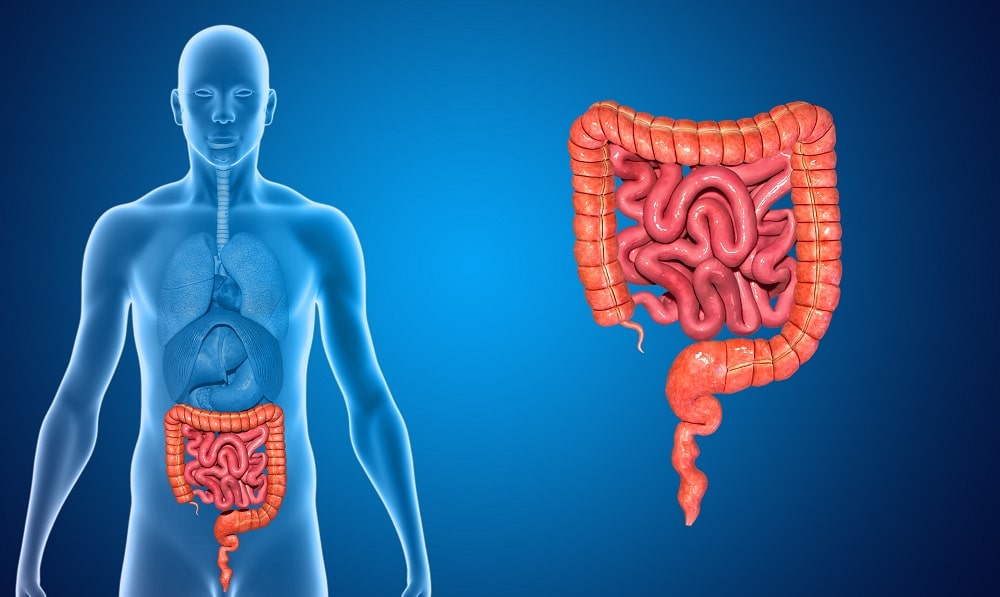Antibiotic Related Diarrhoea
Antibiotic Related Diarrhoea


Probiotics (from pro and biota, meaning “for life”) are made of good live bacteria and/or yeasts that naturally live in the body.3
Although people often think of bacteria and other microorganisms as harmful “germs,” many are helpful. Some bacteria help digest food, destroy disease-causing cells, or produce vitamins. Many of the microorganisms in probiotic products are the same as or similar to microorganisms that naturally live in our bodies.4
Probiotics are part of a larger picture concerning bacteria and the body called the microbiome.3
The microbiome is a diverse community of organisms that work together to keep the body healthy. This community is made up of microorganisms which are a combination of bacteria, fungi, viruses, and protozoa.3,5 Microbiota is the unique combination of microorganisms that exist in a specific environment, for example, the gut.3,5 Gut microbiota is vital for the normal development and functioning of the human body5
Probiotics are made of both bacteria and yeast. Common probiotic bacteria can include lactobacillus and bifidobacterium. The most common yeast found in probiotics is Saccharomyces boulardi (S. boulardii)3 which appears to help fight diarrhoea and other digestive problems.6

Overview
Causes and risk factors
- Severe diarrhoea that may contain blood or mucus
- Fever
- Stomach pain
- Extreme weakness
Signs and symptoms
- Restlessness or irritability
- Lethargy or reduced level of consciousness
- Sunken eyes
- Skin pinch returns slowly or very slowly
- Thirsty or drinks eagerly or poorly or not able to drink.
Diagnosis – when to see a doctor
- Severe diarrhoea
- A new fever
- Blood in the stool
- Is very tired and not drinking liquids such as water.
- Is showing signs of dehydration, such as less urine, crankiness, fatigue, and dry mouth.
If the diarrhoea is severe, your child may need to change antibiotics.15
Impact on quality of life
Treatment
- Keep your child hydrated, offer your child water often.15
- Avoid serving certain foods like:
- Fruit juice
- Fatty foods that are fried, greasy or covered in gravy.
- Soft drinks
- Dairy products such as milk, cheese, and ice cream. Probiotic-rich yoghurt may be the one exception to this rule, as some studies have shown probiotics help rebalance intestinal flora and could shorten the duration of a bout of diarrhoea.20
- Treat nappy rash. If diarrhoea causes a rash around your child’s anus or nappy area: wash the area gently with water and pat it dry. Cover the area with a layer of petroleum jelly, zinc-based cream, or other nappy rash cream.15
Probiotics play an important role in preventing antibiotic associated diarrhoea in children21 and have been shown to reduce days of diarrhoea caused by antibiotics and viral gastroenteritis in children.22
S. boulardii and Lactobacillus rhamnosus GG are two probiotics that are effective in preventing paediatric antibiotic associated diarrhoea when co administered with antibiotics.23
S. boulardii is safe and has clear beneficial effects in children who have antibiotic associated diarrhoea.

Prevention and lifestyle changes
- Give antibiotics only when necessary. Don’t use antibiotics unless your doctor feels they’re necessary. Antibiotics can treat bacterial infections, but they won’t help viral infections, such as colds and flu.
- Ask caregivers to wash their hands. If your child is receiving care at home or the hospital, ask everyone to wash his or her hands or use an alcohol-based hand sanitizer before touching them.
- Tell your doctor if your child has had antibiotic-associated diarrhoea or Clostridium difficile (C. difficile) before. Having antibiotic-associated diarrhoea once or C. difficile in the past increases the chance that antibiotics will cause that same reaction again. Your doctor may be able to select a different antibiotic for your child.11
INTEFLORA 250 (Saccharomyces boulardii CNCM I-745)  INTEFLORA 250 is a antidiarrhoeal probiotic containing a living yeast, Saccharomyces boulardii CNCM I-745, which is used for the treatment and prevention of Antibiotic-associated diarrhoea, Non-specific diarrhoea, thrush, colitis. It is suitable for the whole family. S. boulardii helps protect the intestinal lining from harmful bacteria and enhances non-specific immune defences against bacterial or fungal invasions. These actions re-establish the equilibrium of the gastrointestinal ecosystem and so reduce diarrhoea. S. boulardii also synthesizes and supplies vitamin B components within the gastrointestinal tract. This yeast is genetically resistant to antibacterial agents and can be taken in conjunction with antibiotics to prevent diarrhoea.
INTEFLORA 250 is a antidiarrhoeal probiotic containing a living yeast, Saccharomyces boulardii CNCM I-745, which is used for the treatment and prevention of Antibiotic-associated diarrhoea, Non-specific diarrhoea, thrush, colitis. It is suitable for the whole family. S. boulardii helps protect the intestinal lining from harmful bacteria and enhances non-specific immune defences against bacterial or fungal invasions. These actions re-establish the equilibrium of the gastrointestinal ecosystem and so reduce diarrhoea. S. boulardii also synthesizes and supplies vitamin B components within the gastrointestinal tract. This yeast is genetically resistant to antibacterial agents and can be taken in conjunction with antibiotics to prevent diarrhoea.  Last reviewed : 5 May 2024
Last reviewed : 5 May 2024
Medical References
- Neut C, Mahieux S, Dubreuil LJ. Antibiotic susceptibility of probiotic strains: Is it reasonable to combine probiotics with antibiotics? Med Mal Infect. 2017;47(7):477-483. https://doi.org/10.1016/j.medmal.2017.07.001.
- Moré MI, Swidsinski A. Saccharomyces boulardii CNCM I-745 supports regeneration of the intestinal microbiota after diarrheic dysbiosis – a review. Clin Exp Gastroenterol. 2015;8:237-255. https://doi.org/10.2147/CEG.S85574.
- Cleveland Clinic. Probiotics. 3 September 2020. Available from: https://my.clevelandclinic.org/health/articles/14598- probiotics. Accessed on: 13 September 2022.
- NIH. Probiotics: What you need to know. Reviewed by: Wang Y and Shurtleff D. August 2019. Available from: https://www.nccih.nih.gov/health/probiotics-what-you-need-to-know. Accessed on: 14 September 2022.
- Ramirez J, Guarner F, Bustos Fernandez L, Maruy A, Sdepanian V L, Cohen H. Antibiotics as Major Disruptors of Gut Microbiota. Front. Cell. Infect. Microbiol. 2020;10:1-10. https://doi.org/10.3389/fcimb.2020.572912.
- WebMD. What are Probiotics? Medically reviewed by: Mikstas C. 1 April 2022. Available from: https://www.webmd.com/digestive-disorders/what-are-probiotics. Accessed on: 14 September 2022.
- WHO. Antibiotic Resistance. 31 July 2020. Available from: https://www.who.int/news-room/fact- sheets/detail/antibiotic-resistance. Accessed on: 19 October 2022.
- Fleisher GR, O’Ryan MG, Levy J. Patient education: Acute diarrhea in children (Beyond the Basics). 8 May 2020. Available from: https://www.uptodate.com/contents/acute-diarrhea-in-children-beyond-the-basics/print. Accessed 14 September 2022.
- Healthline.com. What you need to know about antibiotics and diarrhea. 19 November 2020. Available from: https://www.healthline.com/health/antibiotics-diarrhea. Accessed on: 19 October 2022.
- Rui X, Ma SX. A retrospective study of probiotics for the treatment of children with antibiotic-associated diarrhea. Medicine. 2020;99(23):e20631. doi: 10.1097/MD.0000000000020631. PMID: 32502043; PMCID: PMC7306351.
- Mayo Clinic. Antibiotic Associated Diarrhea. 11 August 2021. Available from: https://www.mayoclinic.org/diseases-conditions/antibiotic-associated-diarrhea/symptoms-causes/syc-20352231?p=1. Accessed on: 14 September 2022.
- Tamburini S, Shen N, Wu HC, Clemente JC. The microbiome in early life: implications for health outcomes. Nat Med. 2016;22(7):713-722. doi: 10.1038/nm.4142. PMID: 27387886.
- Health Direct. Diarrhoea in children. Reviewed: June 2021. Available from: https://www.healthdirect.gov.au/diarrhoea-in-children#:~:text=Babies%20and%20young%20children%20are,dry%20mouth%2C%20tongue%20and%20lips. Accessed on: 16 September 2022.
- Billoo AG, Memon MA, Khaskheli SA, Murtaza G, Iqbal K, Saeed Shekhani M, Siddiqi AQ. Role of a probiotic (Saccharomyces boulardii ) in management and prevention of diarrhoea. World J Gastroenterol. 2006; 12(28): 4557-4560. doi: 10.3748/wjg.v12.i28.4557. PMID: 16874872.
- AboutKidsHealth. Antibiotic-associated diarrhea. Last updated: 14 January 2015. Available from:https://www.aboutkidshealth.ca/Article?contentid=820&language=English#. Accessed on: 14 September 2022.
- Pocket Book of Hospital Care for Children: Guidelines for the Management of Common Childhood Illnesses. 2nd edition. Geneva: World Health Organization; 2013. 5, Diarrhoea. Available from: https://www.ncbi.nlm.nih.gov/books/NBK154434/. Accessed on: 15 September 2022.
- Rogawski ET, Westreich DJ, Becker-Dreps S, Adair LS, Sandler RS, Sarkar R, et al. Antibiotic treatment of diarrhoea is associated with decreased time to the next diarrhoea episode among young children in Vellore, India. IJE. 2015;44(3):978-98. Available from: https://academic.oup.com/ije/article/44/3/978/631586. Accessed on: 15 September 2022.
- Bulik, N-B, Farcas A, Bucs C, Iaru I, Oniga, O. Safety of Antibiotics in Hospitalized Children in Romania: A Prospective Observational Study. Pharmaceuticals. 2022;15(6):1-9. https://doi.org/10.3390/ph15060713.
- Zdun-Ryżewska A, Nadrowska N, Błażek M, Białek K, Zach E, Krywda-Rybska D. Parent’s Stress Predictors during a Child’s Hospitalization. Int J Environ Res Public Health. 2021;5(22):1209. doi: 10.3390/ijerph182212019. PMID: 34831774; PMCID: PMC8619911. Available from: https://www.ncbi.nlm.nih.gov/pmc/articles/PMC8619911/. Accessed on: 19 October 2022.
- What to Eat and What to Avoid When You Have Diarrhea. Medically reviewed by Sassi K. 1 March 2018. Available from: https://www.everydayhealth.com/digestive-health/diet/what-to-eat-when-you-have-diarrhea/. Accessed on 15 September 2022.
- Feizizadeh S, Salehi-Abargouei A, Akbari V. Efficacy and Safety of Saccharomyces boulardii for Acute Diarrhea. Pediatrics. 2014;134(1):e176-e191. 10.1542/peds.2013-3950. Available from: http://pediatrics.aappublications.org/content/early/2014/06/17/peds.2013-3950. Accessed on: 15 September 2022.
- Surawicz M. Antibiotic-Associated Diarrhea in Children: How Many Dirty Diapers? J Ped Gastroenterol Nutr 2003;37:2-3. Available from: https://journals.lww.com/jpgn/Fulltext/2003/07000/Antibiotic_Associated_Diarrhea_in_Children__How.2.aspx#JCL0-1. Accessed on: 14 September 2022.
- Yan T, Goldman RD. Probiotics for antibiotic-associated diarrhea in children. Can Fam Physician. 2020;66(1):37–9. Available from: https://www.ncbi.nlm.nih.gov/pmc/articles/PMC7012114/. Accessed on: 14 September 2022.
- IQVIA MIDAS 2020 (ATC: A7F) & IQVIA OTCims 2020 (OTC: 03F1/03D5) & Deduplication.






